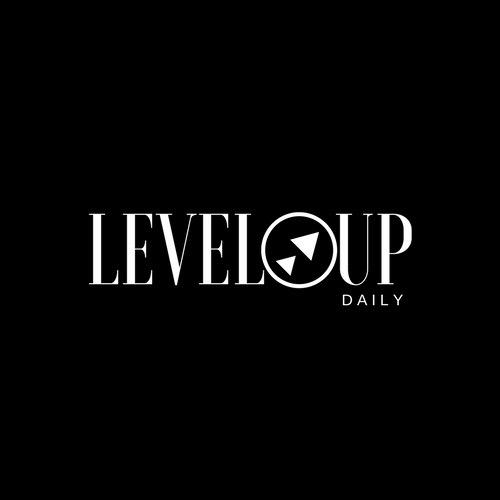2025 Holiday Beauty Campaign Playbook: How Brands Can Win Big This Q4
- Level Up Daily
- Sep 3
- 4 min read
Why Q4 2025 Matters More Than Ever
The holiday season has always been beauty’s Super Bowl. But this year, the rules have changed. If you’re planning a holiday beauty campaign 2025, it’s more important than ever to balance affordable luxuries with memorable experiences gifts that feel special without breaking the bank. At the same time, Gen Z and Millennials expect brands to show up with authenticity, creativity, and even a little bit of magic.
Think of it this way, if Q4 was a runway show, you’re either the collection that gets people talking or you’re background noise.
This playbook will help you cut through that noise with strategies built for today’s beauty shopper.

Trend 1: Start Early or Miss the Moment
Holiday shopping no longer begins on Black Friday, it’s happening right now. In fact, surveys show 40% of shoppers start buying gifts before November. Brands like Sephora have already proven the power of early advent calendar drops, with limited-edition kits selling out before Halloween.
Takeaway: Launch your holiday sets and campaigns by late September or early October. Get into people’s carts before their wallets get stretched thin.

Trend 2: Affordability Meets Premium
Shoppers are watching their budgets, but that doesn’t mean they want “cheap.” They’re looking for value with a premium feel. This is where minis, bundled kits, and refillables shine.
Think Glossier’s holiday sets: curated bundles that feel like a splurge but land under $50. Or Fenty Beauty’s mini gloss collections which is a perfect balance of “treat yourself” and “smart buy.”
Takeaway: Package products as small luxuries. Use language like “little indulgences,” “luxury made easy,” and “value-packed holiday exclusives.”
Trend 3: Building a Holiday Beauty Campaign 2025 That Stands Out
Static ads aren’t enough anymore. Gen Z in particular expects interactivity. Think AR try-ons, TikTok live shopping, or gamified experiences like countdown calendars.
Example: NYX Cosmetics’ AR try-on filters during last year’s holiday campaign allowed users to “test” bold looks virtually, which directly boosted conversions.
Takeaway: Use interactive features whether it’s AR, shoppable Reels, or gamified giveaways to turn browsing into entertainment.

Trend 4: Emotion-Driven Storytelling Works Wonders
Escapism is the new marketing currency. Consumers want campaigns that pull them out of the everyday and into a story. That’s why brands like Dior lean into cinematic, dreamlike ads during the holidays it’s not just perfume, it’s a feeling.
Millennials and Gen Z respond to campaigns that connect emotionally. Nostalgia, family connection, fantasy it all works if it feels authentic.
Takeaway: Build a narrative. Don’t just sell lipstick sell the memory of holiday nights out, the warmth of giving, or the magic of self-expression.
Trend 5: Influencers & UGC Beat Polished Ads
Gen Z trusts people, not polished ads. That’s why micro-influencers and user-generated content are outperforming big celebrity campaigns.
Last year, Rare Beauty encouraged fans to post “holiday glow” looks, then re-shared the best content across their channels. It felt authentic and drove massive engagement.
Takeaway: Create a branded hashtag and invite your community to show off their holiday looks. Amplify their content, and you’ll get built-in trust and reach.

Bonus: Sustainability is the Silent Winner
Today’s consumer doesn’t just want beautiful packaging, they want guilt-free gifting. Eco-friendly wrapping, refill programs, and recyclable packaging all add bonus points.
Brands like Lush have been ahead of the curve, offering packaging-free holiday exclusives. Expect this demand to grow even stronger in 2025.
Takeaway: Make sustainability part of the campaign, not an afterthought. Position it as part of the holiday value proposition.
Conclusion: Your Holiday Playbook for 2025
Winning Q4 in 2025 is about meeting your customers where they are: early, value-conscious, emotionally driven, and ready for interactive experiences.
If you remember nothing else, remember this: start early, tell a story, and let your audience be part of it.
Because the brands that win this holiday season won’t just sell products, they’ll create moments people want to remember.
If you’re ready to start your holiday sales strategy without burn out or blowing your budget, Level Up Daily can help. Let’s build a strategy tailored to your business.
🚀 Book a free discovery call today and start leveling up your lead generation game.
Frequently Asked Questions (FAQs)
1. When should beauty brands launch a holiday beauty campaign 2025?
Ideally by late September or early October. Consumers are shopping earlier than ever, and waiting until Black Friday means you’ll miss a big share of wallets that are already spoken for.
2. How can beauty brands balance affordability with a premium feel?
Focus on minis, bundles, and refillable options. Package them beautifully so they feel like luxuries, even if they’re under $50. Think “affordable indulgence,” not “discount bin.”
3. What role does AR or interactive tech play in holiday campaigns?
A huge one. Gen Z expects shopping to be entertaining. AR try-ons, shoppable TikToks, or gamified countdowns all boost engagement and keep your brand top-of-mind.
4. Do influencers still matter in 2025 holiday campaigns?
Yes, but especially micro-influencers and authentic user-generated content. Shoppers trust “people like me” more than polished celebrity ads. Encourage your community to share holiday looks with a branded hashtag.
5. How important is sustainability in holiday beauty marketing?
More important every year. Consumers, especially Millennials and Gen Z—want to gift without guilt. Highlight eco-friendly packaging, refills, and sustainable sourcing as part of your holiday value story.




Comments